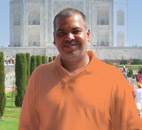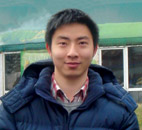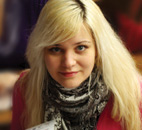Khreshchatyk
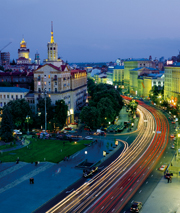
Khreshchatyk and Maidan Nezalezhnosti are the face of Kyiv. Young and spirited, they are liked by many. Kyiv’s central street is the most popular place for meetings, recreation and shopping. All streets lead here, so you can hardly miss Khreshchatyk.
However, once this was only a gully with a creek which separated parts of the ancient town: The Old Town from Lypky. Only in the early 19th century, the gully turned into the street that makes Kyiv, what it is today. Since then, Khreshchatyk has changed its appearance and name quite often. One of the black pages in its existence was World War II. After the war, Khreshchatyk reemerged in its new and more monumental form. It was considerably widened and elevated. Only in some places you can still find constructions that were not rebuilt and have survived the war. Yet, Khreshchatyk’s new face has a charm of its own, hasn’t it?
On holidays, the entire central square of the Ukrainian capital turns into a large concert stage that welcomes everyone. On weekends, the street from Maidan to Bessarabka is a pedestrian mall. On such days, Khreshchatyk in fact resembles a creek, yet not one filled with water, but with human laughter and music.
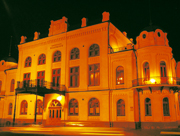
The National Philharmonic Volodymyrs’kyi Uzviz, 2 (Architect V. Nikolaiev, 1882)
This elegant edifice was salvaged during WWII. The hall has great acoustics, far better than any other hall in Kyiv. Its stage has hosted performers such as List, Rachmaninoff, Shaliapin, Bernstein, Skriabin, Rastropovich and many others. Symphony and chamber music lovers will enjoy great performances here by the symphony orchestra during classical music festivals. Every year, an international contest of pianists named after Volodymyr Horowits’ takes place here.
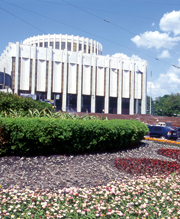
The Exhibition Center “Ukrainian House” Khreshchatyk Street, 2 (Architect V. Hopkalo, 1982)
European Square will attract your attention due to a monumental Soviet-style building. Its simplified geometric forms, white marble and cascading red steps exude an air of pomposity. But this is nothing to be surprised about, since it was once the Lenin Museum. Today, it is a conference hall and exhibition center.
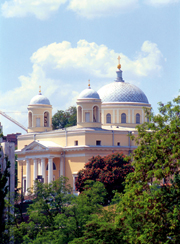
The St. Alexander Catholic Church Kost’olna Street (Architect F. Miekhovych, 1817-43)
If you turn from Ukrainian House onto Tr’okhsviatytels’ka Street you will see a Dominican Roman Catholic Church. During the Soviet days, the church was used as a planetarium. Today, services are held here in various languages, including Ukrainian, Russian, Polish, French and English.
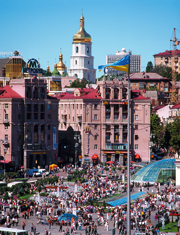
Maidan Nezalezhnosti (Independence Square)
The square received its current name after Ukraine proclaimed its independence in 1991. In 2001, the Maidan was reconstructed completely. In the center of the square, you will surely find the Monument to Independence, a 50-meter-high column of steel with a 12-meter bronze statue of the Hearth Mother. According to national tradition, she protects the Ukrainian people from all woes.
The square comprises several sculptures. One of them represents the legendary founders of Kyiv - Kyi, Shchek, Khoryv and their sister Lybid’. Another bronze statue is dedicated to a folkloric hero — Cossack Mamai. The classical white building with Greek columns is the Chaikovs’kyi National Music Academy, established in 1913. On the other side of Khreshchatyk you will see the Lyads’ki Gates, which have been re-created. They mark the area where the historical gates into the old city once were located. They are adorned with a sculpture of Archangel Michael, the patron saint of Kyiv. He is depicted on the coat of arms of the city.The word Maidan became famous in the world thanks to the explosive events of 2004.During this time, the Maidan ended up being the epicenter of world attention due to its peaceful Orange Revolution. Imagine, for several weeks in a row more than 500,000 people gathered on the square daily. Tents were pitched all along Khreshchatyk, virtually all the way to Bessarabskyi Market. But all of this is history now. Today, you will see many smiling faces on the Maidan, hear street musicians and enjoy the fountains. And on holidays, the Maidan turns into a large concert hall to which everyone is invited.
During this time, the Maidan ended up being the epicenter of world attention due to its peaceful Orange Revolution. Imagine, for several weeks in a row more than 500,000 people gathered on the square daily. Tents were pitched all along Khreshchatyk, virtually all the way to Bessarabskyi Market. But all of this is history now. Today, you will see many smiling faces on the Maidan, hear street musicians and enjoy the fountains. And on holidays, the Maidan turns into a large concert hall to which everyone is invited.
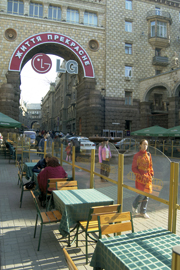
Pasazh Arc of building No 32 on Khreshchatyk (Architect P. Andreiev, 1913-1915)
If you walk along Khreshchatyk, pay attention to the arc of building No. 32 and you will reach a street with lots of shops called the Pasazh. Two parallel parts create this quiet passage from Khreshchatyk to Zan’kovets’ka Street. You can take a break here and relax at a small caf?.
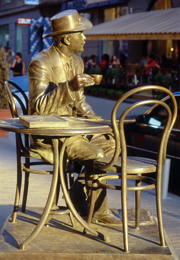
Monument to Architect V. Horodets’kyi
(Sculptor V. Shchur, V. Seiko, 2004)
You will notice a bronze statue of a man sitting at a table at a cafe. This is a monument to architect Vladyslav Horodets’kyi (1863-1930). His buildings have become the trademarks of Kyiv. They include the building with chimeras on Bankova Street, and the Church of St. Nicholas on Velyka Vasyl’kivs’ka, the National Art Museum of Ukraine on Hrushevs’kyi Street and many others. You can also come across his works in Poland, like the Tribunal Covered Market, and others. And in Teheran, a theater, railway station and luxurious palace were built based on his architectural drafts. Kyivites are very proud of the architectural legacy left to them by the great master and they refer to him as Ukraine’s unequivocal architect of the century.
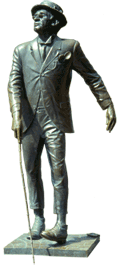
The Monument to Panikovs’kyi Prorizna Street (Sculptors V. Shchur, V. Sivko, 1998)
If you turn onto Prorizna Street from Khreshchatyk and move your way up to a small square, you will see another bronze statue of a person. But this monument does not represent a real individual, but rather a literary character from the novel by Il’f and Petrov, “The Golden Calf”. Let’s introduce you – this is Mr. Panikovs’kyi. The sculptor was able to pass on the cunning eyes of the “blind” street crook. The comedy “The Golden Calf” is a popular book and the monument testifies to this.
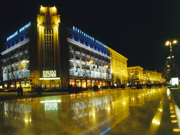
Tsentral’nyi Univermah (the central Shopping center) Khreshchatyk, 38/2 (1936-39)
The central shopping mall is a five-storey edifice in a simplified rational form. It has been a large shopping mall for many years and today you can buy many Ukrainian and imported goods here.
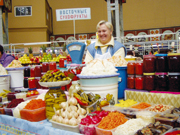
Bessarabs’kyi Market Bessarabs’ka Square (1909-1912)
Bessarabs’ka Square is at the very end of Khreshchatyk, Kyiv’s main street. In the center of the square, there is a rotunda shaped building in Modern style. This is Bessarabs’kyi Market, famous for its special style. It was built in the early 20th century according to plans of the Polish architect H. Hai. In the past, peasants from Bessarabia (Moldova) brought their goods to sell here and this is how the market’s name was derived. Today, as in the past, commerce here continues. Shopping at Bessarabka signifies prestige and prosperity. To the left of Bessarabs’ka Square you will see a complex of reconstructed buildings in Neo-Renaissance style. This is the “Bessarbas’kyi Kvadrat”, which along with the modern shopping and commercial complex, “Mandarin Plaza”, is a true crowning beauty of the city center.
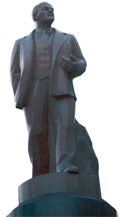
The Monument to Lenin (Sculptor S. Merkulov, architects O. Vlasov, E. Yelizarov, 1946)
Across from Bessarbas’kyi Market, at the very beginning of T. Shevchenko Boulevard, you will see a monument to Vladimir Lenin, leader of the Russian Revolution of 1917. Most similar monuments were taken down after Ukraine’s independence. However, this one was left as a memory of this complicated epoch in Ukraine’s history. This particular monument is smaller in size and pomposity than other monuments of the totalitarian age.
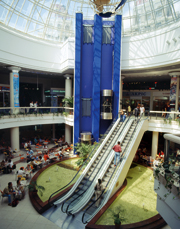
“Underground Khreshchatyk”
In the last few years, underground complexes have become very popular in Kyiv. Is it because the land in the center is scarce and expensive, or is it that Kyivites do not want to alter the look of the ancient part of the city center? Who knows? But this process has also affected the development of Khreshchatyk. On European Square, you can make your way through the longest underway passage in Kyiv. Under Maidan Nezalezhnosti and Bessarabs’kyi Market, entire “underground cities” have been built. Here you will find underground malls such as “Globus” and “Metrohrad”, which descend several levels. You can spend time shopping here, have lunch or sit near a fountain.
